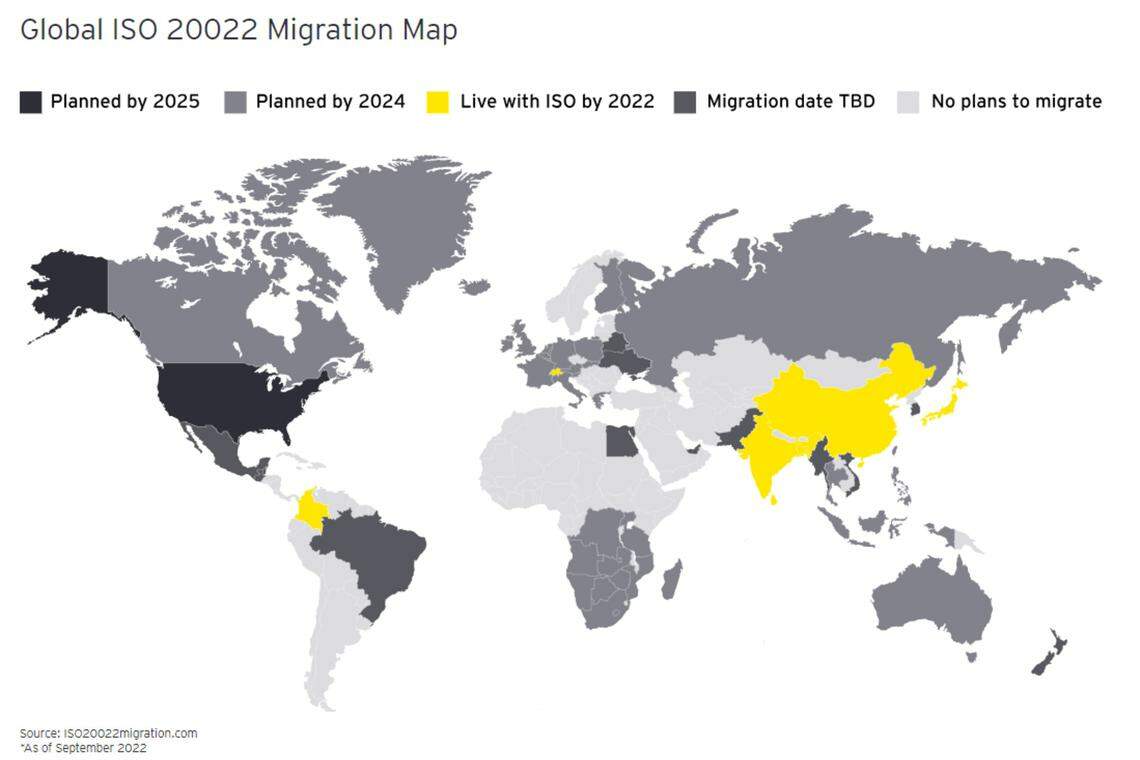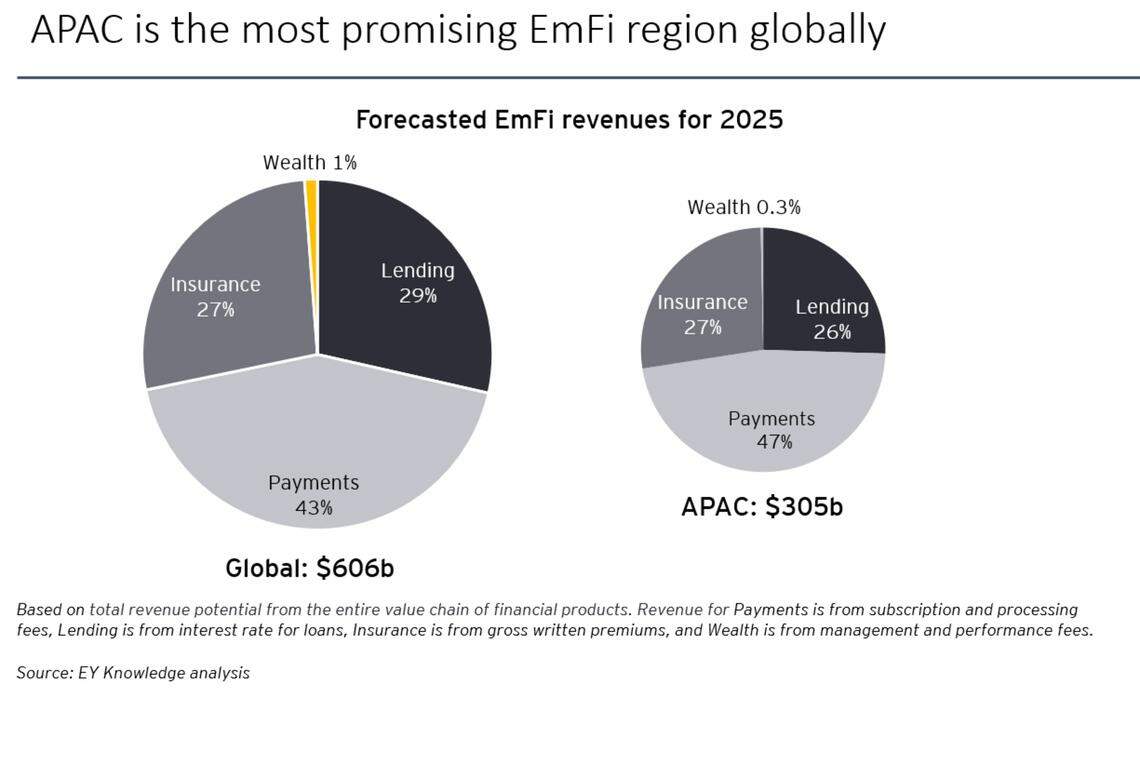Improving customer experience and unlocking revenue streams: Why seizing innovation is key for growth in 2024
With GenAI, embedded finance and modernisation of legacy banking systems expected to become a norm, financial services leaders must remain proactive and improve agility to retain customers and spark new opportunities
IN 2024, South-east Asia's financial services (FS) sector will see the profound impact of emerging technologies and strategic innovation.
In response to the region's digital and social commerce growth, the sector will be increasingly characterised by instant cross-border payments, embedded finance - which refers to the integration of financial services into non-financial offerings - as well as core banking modernisation, which refers to the upgrading and replacement of outdated IT systems, infrastructure and processes. In the asset management sphere, the launch of the Variable Capital Company (VCC) 2.0 will allow single family offices to use the VCC as an evergreen investment vehicle.
Says Mriganko Mukherjee, EY Asean Wealth and Asset Management leader: "VCC 2.0 and the continued growth in wealth and family offices will position Singapore as the wealth capital of Asia."
But while the innovation opportunities are profound, interoperability and cross-sector convergence will introduce new financial crime and payments risks.
Three key considerations for financial services firms
What are the biggest risks and opportunities in 2024 as technology and regulatory trends continue to reshape South-east Asia's financial services market?
How can incumbents get ahead of the curve to retain the customer relationship in cross-border transactions as well as embedded finance and insurance?
Where will GenAI generate the most value as institutions seek new levels of responsiveness in customer service, compliance and cybersecurity?
Rapid increase in cross-border transactions
South-east Asia is a flourishing market for cross-border e-commerce - a space where fintech companies are well-positioned to win share from banks. The region's cross-border transactions increased rapidly in 2023, driven by economic growth, digital infrastructure development and growth in tourism.
GET BT IN YOUR INBOX DAILY

Start and end each day with the latest news stories and analyses delivered straight to your inbox.
Cross-border transactions have previously been hampered in places by the high cost, slow speed, lack of transparency and security concerns associated with remittances. But regulators, financial institutions and industry stakeholders have been collaborating around multiple initiatives to address these issues. 2024 looks to be the year where cross-border payment connectivity will be boosted across the Asia-Pacific by real-time payments, application programming interface (API) and blockchain. Importantly for South-east Asia, a local QR-code-based real-time payments ecosystem is taking shape.

In the year ahead, adopting ISO 20022 messaging standards will help to overcome interoperability challenges, providing consistent messaging globally for data flows across the FS sector. Institutions that don't migrate in time could find themselves at a disadvantage - even excluded from payments networks.
Integrated fraud services and Gen AI tackle financial crime
In 2024, one key area on the agenda will be the increase in fraud being driven by real-time payments, which afford little time for authentication. In response, institutions will increasingly make use of integrated fraud services, where transactions can be screened and (if necessary) blocked in close to real time. Multiple risk mitigation strategies are also likely to become commonplace, with biometrics and behavior authentication used alongside passwords and multi-factor authentication.
Meanwhile, generative artificial intelligence technology (GenAI) is expected to drive advances in identity fraud, with deep fakes increasing the likelihood of crime and rendering current know-your-customer (KYC) controls ineffective. In response, FS chief information security officers will need to add the same technology to the cybersecurity armoury.
We expect investigation copilots will improve the consistency of decisions across volumes of data previously unmanageable for humans alone. Large language models (LLMs) will be used for transaction look-backs to significantly speed up transaction reviews by extracting relevant information, identifying transaction patterns and flagging suspicious activities.
We also expect to see FS firms training their own LLMs to increase responsiveness and agility. For example, an AI-enabled knowledge base trained on tailored banking data can support banking employees to quickly surface accurate information current regulations, intricate product specifications or up-to-date security protocols. This will help to remove the burden of regulatory compliance, expedite customer service and fortify security measures. The result will be increased customer satisfaction, reduced risks and operational efficiencies.
"Insurers must evaluate the impact of GenAI on their business and make the most of the technology's potential to improve, not just fraud prevention, but strategic planning, customer experience and claims management."
Exponential rise in embedded finance and insurance
2024 will also see non-FS companies increasingly embedding financial services in their core value propositions. This embedded finance (EmFi) will drive cross-sector convergence as finance components are invisibly integrated into customers' purchasing experiences.

Embedded wealth could soon be disrupting the dynamics of wealth management. There's real potential for retail banks, for example, to offer "brokerage-as-a-service" as a value-add for customers with savings accounts. In the same vein, financial health platforms, which are already adding savings services, could be providing investment services.
Payment firms will capitalise on embedded payments by developing integrated payment solutions, leveraging data and AI, and providing value-added services. Insurance and lending will be the largest categories among the EmFi product spectrum, often bundled together.
EmFi presents FS incumbents with opportunities to explore new markets and reinvent their core businesses by partnering with third-party platforms to offer interoperable FS. The question is: How much of the EmFi market can traditional institutions secure?
With their core underwriting capabilities, insurers with bold embedded insurance strategies should be able to avoid disintermediation. Insurance-as-a-Service will be integrated with mobile apps and websites to purchase insurance with one click at the point of sale. Insurers are well placed to become a core element of this market alongside retailers and marketplaces, with platform partners connecting the two using pre-built solutions and accelerators.
Wealth and asset managers (WAM) may not be so well placed. The WAM sector has tended to lag others in the use of AI and technology. It will need to leapfrog forward by partnering with fintechs to retain a place at the EmFi table.
In 2024, the most pervasive form of embedded lending is likely to be buy now, pay later (BNPL), with installment products integrated into retail platforms. In South-east Asia's emerging markets, where a high percentage of customers struggle to secure traditional credit, BNPL providers can offer a financial lifeline. We therefore expect banks to use EmFi, in the form of BNPL, to promote financial inclusion.
Core banking modernisation becomes easier
The 65 per cent of FS IT budgets currently going towards "keeping the lights on" is untenable. Firms need to stop making modest adjustments to a decades-old, unwieldy assortment of systems, infrastructure and processes. The imperative is to evolve towards nimbler solutions that will reduce complexity and enhance operational efficiency, while enabling firms to innovate faster and provide the seamless, tailored experiences consumers demand.
In 2024, legacy simplification will be much easier thanks to the rise of open APIs that create a connected network of FIs, software suppliers and FinTech communities. By further combining APIs with organisational structures such as low and no-code platforms, modular technology architecture and microservices, institutions will be able to innovate faster and more cost efficiently.

Advanced technology such as GenAI, while in its early stages of adoption, will continue to be a growth accelerator as it optimises processes and empowers the strategic delivery of customer focused solutions to drive new revenue growth.
Innovation will be the FS watch-word this year
The evolving landscape of South-east Asia's financial services industry presents exciting opportunities for incumbents who are willing to embrace innovation.
Real-time payments, GenAI, embedded finance and legacy simplification are not merely trends but essential pillars for staying ahead in the market. By leveraging these technologies and concepts, financial institutions can enhance customer experiences, streamline operations and unlock new revenue streams.
As the industry continues to evolve, incumbents who remain proactive in harnessing innovation will not only stay competitive but also thrive in an increasingly dynamic and digital financial ecosystem.
This story was written by Mr Brian Thung, EY Asean Financial Services leader, Ernst & Young LLP.
Learn more about the future of financial services here.

KEYWORDS IN THIS ARTICLE
BT is now on Telegram!
For daily updates on weekdays and specially selected content for the weekend. Subscribe to t.me/BizTimes
Technology
Garmin’s Q1 results beat on strong demand for fitness, auto products
Foxconn’s musical chairs sound like punk rock
US sets up board to advise on safe, secure use of AI
Regulate AI? How US, EU and China are going about It
Meta’s results are best viewed through rose-tinted AI glasses
'Harvesting data': Latin American AI startups transform farming
